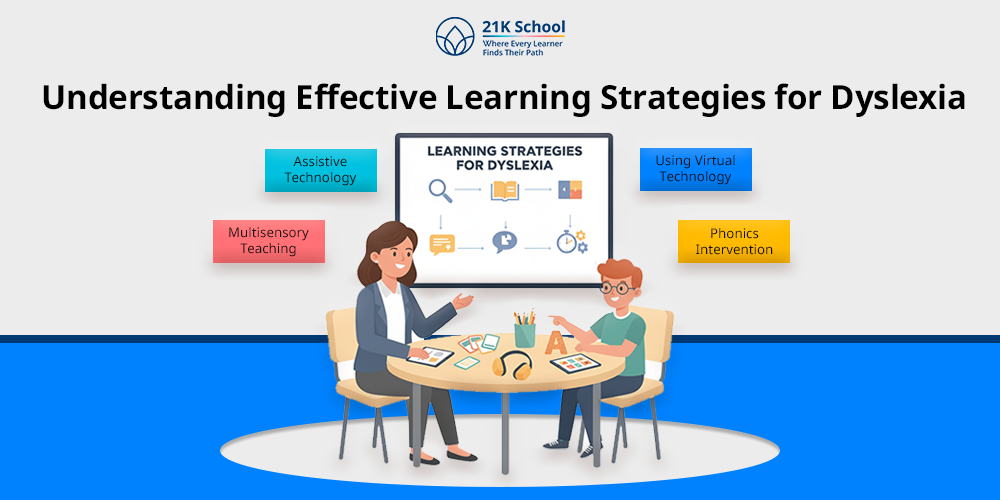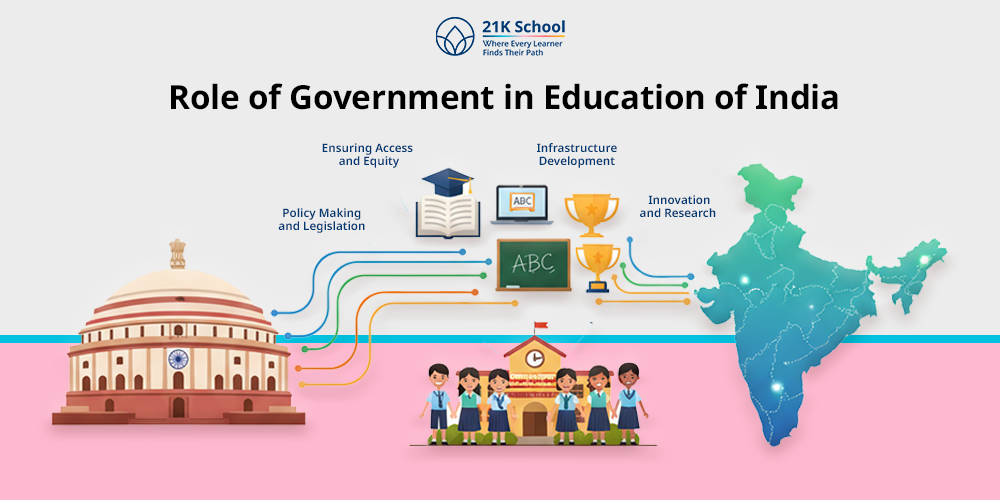
Dyslexic learners often experience difficulties with reading and language arts. It affects writing, reading and spelling as well.
Learning problems are not caused by low intelligence, but the cause is the differences in cognitive processing. Besides this, dyslexia is individual.
Good teachers and an inclusive learning environment help too. Visual representations, task dissection & extra time spent on the tasks might help/lessen the student’s frustration.
Contents
- What is Dyslexia?
- The 14 Best Learning Strategies for Dyslexia
- 1. Multisensory Teaching
- 2. Assistive Technology
- 3. Inclusive Learning Environment
- 4. Using Virtual Technology
- 5. Make Reading Fun
- 6. Give Extra Time
- 7. Boost Confidence
- 8. Personalised Learning
- 9. Flexible Learning Routine
- 10. Phonics Intervention
- 11. Structured Language Program
- 12. Practice Repetition
- 13. Breaking down the Total Tasks
- 14. Building a Supportive Learning Environment
- Concluding Thought
What is Dyslexia?
Dyslexia is a common, lifelong, neurological learning disability that primarily causes difficulties with reading, writing, and spelling, despite average or above-average intelligence.
Dyslexia affects reading and language skills . Dyslexia does not clear on its own in the academic arena, but through early intervention programmes, with proper support and assistance, students can successfully cope with and overcome its difficulties.
The processing of structures, symbols, or sounds of words occurs in various regions of the brain; neurological problems can disrupt the ability to decode words or identify patterns.
The symptoms tend to manifest themselves in early childhood – reading difficulties, spelling mistakes, reduced reading speed or inability to perceive written text.
And dyslexia does not have anything to do with intelligence or IQ – dyslexics are usually very intelligent. Dyslexics, many of them, love imagination, solving problems and being creative and are more content.
The 14 Best Learning Strategies for Dyslexia
It is a neurological problem that involves difficulties in reading, spelling and writing words. Below is a list of learning strategies for dyslexia.
1. Multisensory Teaching
In learning a language, multisensory learning, that is, the sensory input of sight, touch, sound and movement, is superior to rote learning – this is dyslexia.
In a multisensory classroom, all the learning styles are addressed, and abstract concepts are transformed into real concepts within the minds of dyslexics. Also, multisensory education helps with memory, and we see less frustration in dyslexic learners.
2. Assistive Technology
Dyslexic students can also be assisted with the help of assistive technology. Assistive technology in education is a kind of tool or program that levels the playing field for people with difficulties in reading or writing, with the purpose of education.
And this also enhances their digital literacy and flexibility to the point that dyslexic students become active in both academia and the workforce.
3. Inclusive Learning Environment
Dyslexic students do best in an inclusive setting. No student is marginalised because he or she is different in an inclusive classroom .
Empathy , collaboration, less worry, and more interest in social-emotional development lead to more engaged students.
4. Using Virtual Technology
Internet learning, virtual reality, active applications, virtual learning technology, personalised learning experiences. You have interactive simulations of such abstract concepts as phonics or vocabulary that are significantly less uninspiring or intimidating.
One of the strengths of dyslexic learners is their ability to find fun in learning while being inquisitive, without the pressure of traditional remedial approaches.
5. Make Reading Fun
Repetition assists in memory and reading – when combined with other tools, it works. Make boring reading interesting by giving students stories and games. Students who have dyslexia say it is tiring or difficult. But for such students, dynamic book reading will help too.
It is also a lifelong learning approach, which is all about satisfaction in getting the challenges over with and in gaining literacy skills in a non-judgmental manner.
6. Give Extra Time
The more time available, the easier it is to meet due dates, tests and work on processing differences. In dyslexic students with the required time to decode text / maybe, arrange thoughts, this reduces study stress , increases accuracy and speed.
The presentation here, in the context of this wide-ranging program, demonstrates that just testing of dyslexic students – based on the comprehension rather than on timing – can enhance both academic achievement and self-efficacy.
7. Boost Confidence
Confidence will be achieved through positive reinforcement, the use of success-oriented tasks and recognition of strengths. And, in dyslexia, the shortfall may be masked by praise for effort/achievement, such as creative problem solving.
It is a virtuous circle wherein the higher the confidence, the higher the student engagement /performance and the dyslexic pupils academically and socially. This way, learners grow tough and their mentality towards growth – they view challenges as an opportunity.
8. Personalised Learning
Education is customised to the speed/the interest, and demand of the learner, usually through the personalisation of data. However, for all dyslexic people, it is a matter of ensuring that lessons are made to play to their strong sides, such as visual learning, and the weak side as well.
It renders learning topical and self-regulated learning , and that is highly inspirational. In general, it is concerned with adapted education programmes among dyslexic learners.
9. Flexible Learning Routine
A flexible learning schedule involves flexible breaks and ways of changing the energy levels/focus. That would be short and in between activities – not long ones if a dyslexic student is tired of difficult tasks.
Easy learning helps with time management /study habits, etc. Such a way of working enhances productivity since rhythms are not disrespected, burnout is not experienced and overwhelm is not experienced.
10. Phonics Intervention
In phonics interventions, letters and sounds are explicitly taught to pupils to enable them to decode words. And with dyslexics, who tend to have a problem with phonological awareness, that would be organised activities such as combining sounds or word-breaking.
Thus, phonics intervention is used to ensure that learners demystify language in order to develop uniform and targeted language.
11. Structured Language Program
A systematic language program, then, instructs in portions of language – grammar , vocabulary and syntax, in a progressive, cumulative manner. Students who have dyslexia simplify complex language and render it predictable and repetitive.
It involves a lot of skill development to make sense out of the gaps. In the case of long-range literacy, it is okay so long as it is modified to the person and combined with other learning objectives.
12. Practice Repetition
Repetition refers to the repetition of a given material numerous times so that it becomes easy to remember or understand. In dyslexia, we find that those students who require additional training to learn a concept do not mind – good short-term memory.
Moreover, it is connected with the effect of spacing: spacing increases the recollection. That is, repetition causes something to become nearly automatic; this is how reading fluency develops.
13. Breaking down the Total Tasks
It is as though it were like biting the entire job at a time. Beneficial to dyslexics with difficulties in organising information, focusing, and processing stages in a particular order.
This is consistent with the adaptive learning of the personalised, simplifying difficult/abstract tasks – so that they are less daunting.
14. Building a Supportive Learning Environment
That means the dyslexia strategy should be based on a less restrictive and more supportive/positive learning environment . So it means being able to create an emotional as well as a physical space where learners should be able to thrive despite their difficulties.
Hence, dyslexic students develop better attention, motivation, empathy, collaboration skills , and improved academic and social outcomes.
Concluding Thought
Dyslexia affects language, writing and reading, but with multisensory teaching, assistive technology and supportive teaching environments, the pupils will get over this and do well in school.
Separating the activities into manageable units, like inclusion and individualised support, builds self-confidence in the educators and parents and reduces frustration so people with dyslexia can use their imaginations and problem-solving skills .
This combination of such inquiry-based learning techniques with early intervention will eventually result in improved learning and a much fairer society where all the pupils will have a chance to shine.



